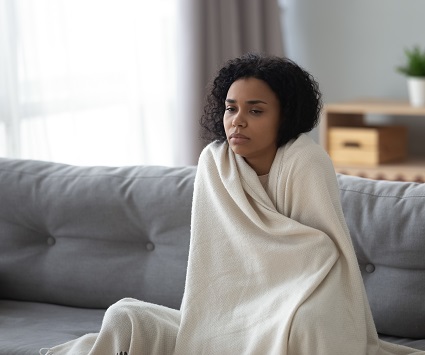SAD: More than the “Winter Blues”
Here in Iowa, fall is a beautiful time of year. The temperatures cool down, the humidity abates and the trees present a lovely palette of green, yellow, orange and red.
But as fall progresses and the northern hemisphere moves further away from the sun, many of us start to feel an impact on our mental health. We have less energy. We’re more easily irritated. We lose interest in our normal activities.
In some people, these feelings meet the criteria for seasonal affective disorder (SAD). SAD is a form of depression that follows a pattern of emergence and remittance that coincides with certain seasons. SAD most commonly occurs in the fall and winter months and eases in the spring.
It’s common to see symptoms of SAD begin toward the end of October and early November. However, seasonal symptoms of depression can occur at any time of the year, and this varies from person to person.
The cause of SAD is uncertain, but experts believe it’s due to a combination of neurotransmitter imbalance (brain chemicals that affect mood), hormones, circadian rhythm dysregulation, genetics and psychosocial factors. Young adults and women are more likely to experience SAD, but it still occurs in children, adolescents and men.
How SAD is diagnosed
The clinical diagnosis of seasonal affective disorder (and other forms of depression) requires a person to have a persistently low mood or a marked disinterest in activity for at least two weeks. Note that you don’t have to actually feel sad to have this disorder. Depression can often present as feeling mostly irritable or even just “blah.”
In addition to a change in mood or decreased interest in activities, people also see changes in sleep pattern, energy level, appetite and concentration. Common symptoms specific to seasonal affective disorder include a notable reduction in energy, sleeping excessively, overeating, weight gain and a craving for carbohydrates. Even patients with Bipolar Affective Disorder can experience seasonal patterns of depression.
Treatment options for SAD
There are several treatment options for SAD. Light therapy is generally the best treatment option. Other additional therapies include cognitive-behavioral therapy, exercise and medication. Some people will respond best to a combination approach to treatment.
Due to the seasonal aspect of SAD, many people find they don’t need treatment year-round. Treatment could start in the fall months and taper off in the spring.
Light therapy
Light therapy is the most effective treatment for SAD. During light therapy, the patient sits near a light therapy box for a period of time each day. The light rays enter the pupil of your eye and work their magic on your retina. So while tanning beds may give you a nice summer glow, this is a very different type of light therapy. Studies have shown that 20-30 minutes of light therapy during morning hours helps to improve symptoms of depression.
Keep in mind that, like any treatment, there are guidelines for light therapy. The brightness of your light therapy box will be rated in LUX. It’s recommended to use a light therapy box rated at 10,000 LUX for the treatment of SAD.
The light box should be positioned at a 45 degree angle to your eye and only an arm’s length away. Light therapy works best if done in the morning and should be avoided later in the afternoon or evening in order to minimize sleep disturbance.
Behavioral activation
One treatment option that’s effective for all forms of depression is a therapy style called behavioral activation. It involves making yourself do things that will help you feel happier—even if you don’t feel like doing them at the time. For example, making yourself go on a walk every other day. Or scheduling regular social interactions—even if it’s just a phone call.
The important part about behavioral activation is to keep a structure and a schedule. The activity can be something small, like vacuuming even part of a room at a time. But it’s important to do it regularly, and stick to it even when it feels hard. This helps you prevent the inertia of inactivity from taking over.
Social interaction, in particular, has been shown to be very helpful in alleviating the symptoms of depression. Humans are social beings (yes, even introverts), and we do best when we interact with others.
The good news—especially during the current pandemic—is that you don’t have to be physically with another person to benefit from social interaction. Studies have shown that phone conversations and video calls (FaceTime, Zoom, etc.) still help.
Supplemental treatments
There are other approaches to treatment of SAD as well. These can include therapy, medications and exercise—or a combination of those.
Get diagnosed first
Before starting treatment for SAD or any other form of depression, it’s very important to first get an accurate diagnosis from a professional. Even something as seemingly safe as light therapy can have a negative effect on people who may actually have a different form of mood disorder, such as Bipolar Affective Disorder.
Don’t put off getting help
It can be tempting to dismiss symptoms as “winter blues” and just wait them out. But it’s important to take steps to remain emotionally healthy all year long. If ignored, depression can lead to serious problems, such as social withdrawal, school or work difficulties, substance abuse, weakened immune systems and even suicidal thoughts and behavior.

